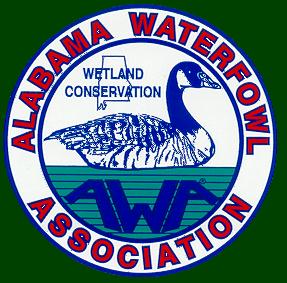

CONSERVATION ALABAMA
SOUTHERN MIGRATORY BIRD HABITAT IS IN CRITICAL CONDITION
Example: From 1992 to 1997 over 445,000 acres were taken out of farm, forest and set-aside land and used for development. This makes Alabama 13th in the United States in number of acres lost to development and urban sprawl.
Many people are not cognizant of what is happening in the southeastern region of the United States with migratory birds and their habitat. Lets look at the past management strategy of many of the conservation organizations and the U.S. Fish and Wildlife Service (USFWS). Here we have created millions of acres of reproduction habitat in the northern part of the U. S. and Canada, with the North American Waterfowl Management Plan, habitat work from many of the state waterfowl and wildlife associations, plus the USDA’s Farm Bill programs, the Conservation Reserve Program, Wetland Reserve Program, and Wildlife Habitat Incentive Program and other funding for habitat development. This has been a monumental task creating millions of acres of habitat with great results population increases on most of the migratory bird species. However, we have reached the goals of the North American Waterfowl Management Plan for a fall flight to equal what was in the mid-fifties of 100 million ducks. Well when you create wetland habitat for ducks, you also create habitat for all the other species that uses this type habitat for reproduction. So what you have done is create a fall flight of not only ducks, but all moist soil dependant species, and other neo-tropical migrants. This also is true with starlings, blackbirds, crows and all other migrants that need the grain and habitat in the south to sustain these species and replenish energy for the journey back north for reproduction. What you have is a fall flight of the number of migrating bird you had in the mid-fifties with only half of the staging and over-wintering habitat that was available in the mid-fifties. The past two summers and fall in the southeast has been very dry with not much habitat available for the migrating birds, this is true here in the Tennessee River Valley, also Arkansas, Tennessee, and Mississippi. As the birds migrate through this region there is a bad shortage of moist soil habitat and is causing the birds to fly great distance without moist soil habitat. Pumped-up areas are created in Arkansas, because this farmer has the ability, because of water needs for rice farming. Of course most of these areas are pumped to create duck hunting opportunities. This is a blessing when you consider that many times this is the only feeding and rest stop on the southward journey to the coastal region. Although pumping is very expensive appx. $5 for 6 inches of water over 1 acre. In Alabama very few farmers or duck hunters have this luxury of pumping because of lack of water source pump and is expensive. The dry weather in the south afforded the farmers to turn under more of the grain production land that has residual left over grain that offers a great food source for many species of wildlife. The farmers may not know how important the left over grain is for wildlife, or maybe because of low grain prices, farmers feels he has to take every advantage of the time, so he can be ready to plant his crop as early as possible to capture the spring rains.
I know in the past all the people have been told to send all your money north for reproduction habitat. Now we have a problem with losing so much wintering habitat at an alarming rate. Many people ask what can we do. I would like to make a few suggestions on how you as a duck hunter and conservationist can help conserve and create more southern habitat.
For more information contact: Jerry Davis (256)259-2509
Conservation Alabama is an article written by Jerry D. Davis, Chief Executive Officer and principle founder of the Alabama Waterfowl Association. Also, serves as Board of Director on the North American Waterfowl Federation. Member of Strathmore’s Who’s Who for outstanding leadership in a profession or occupation.